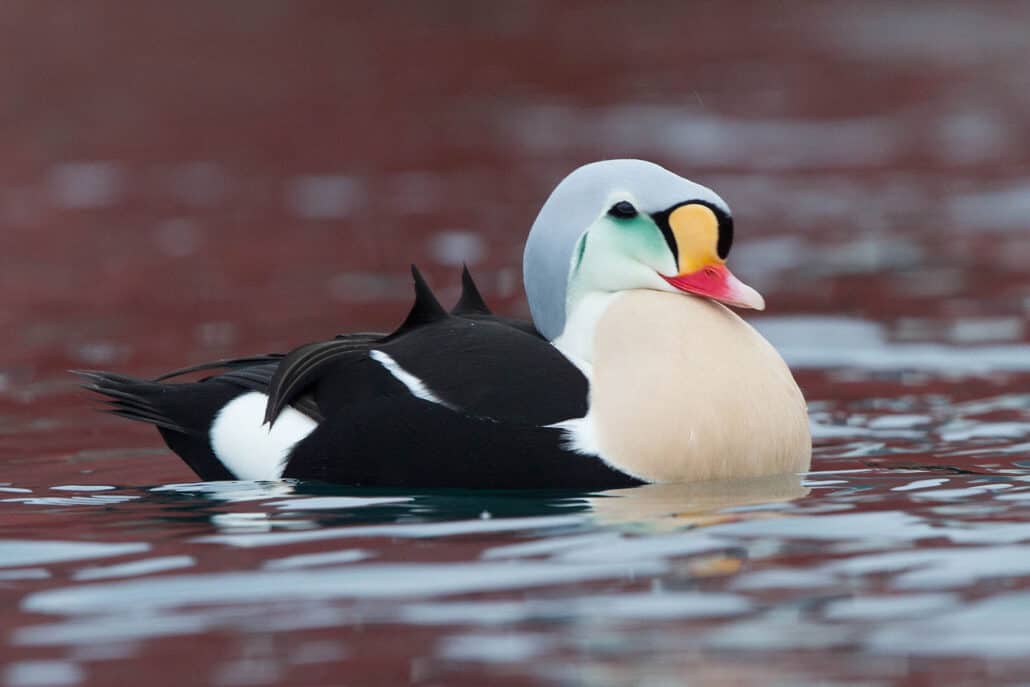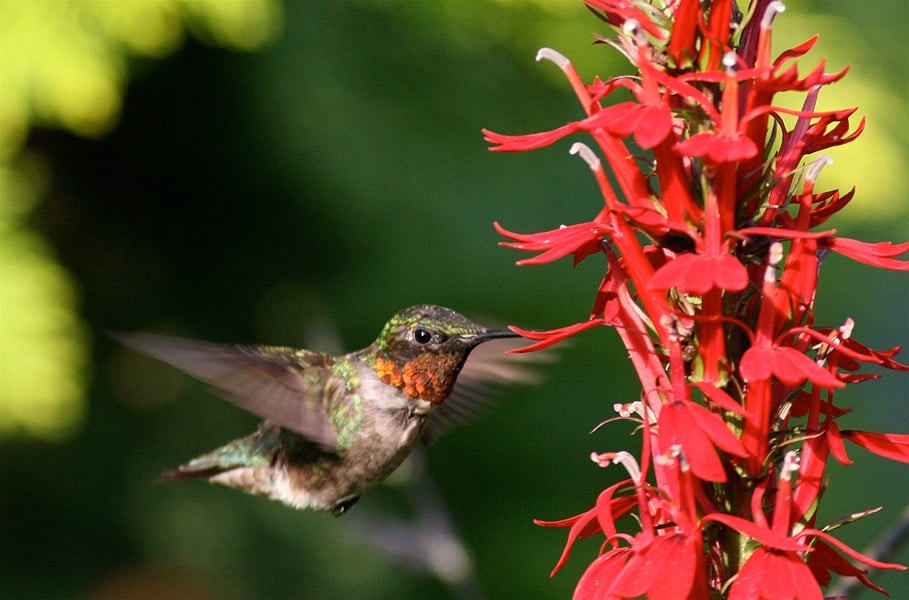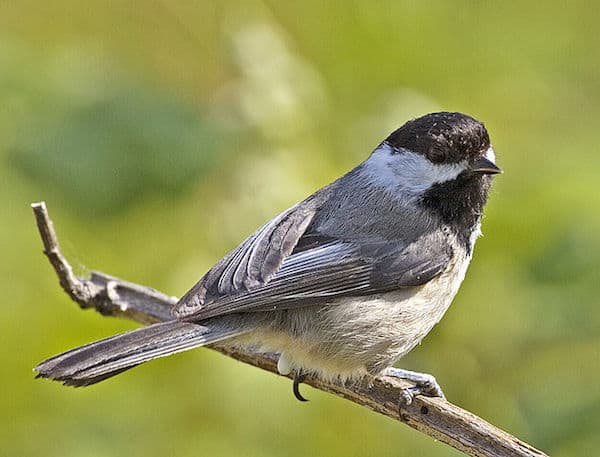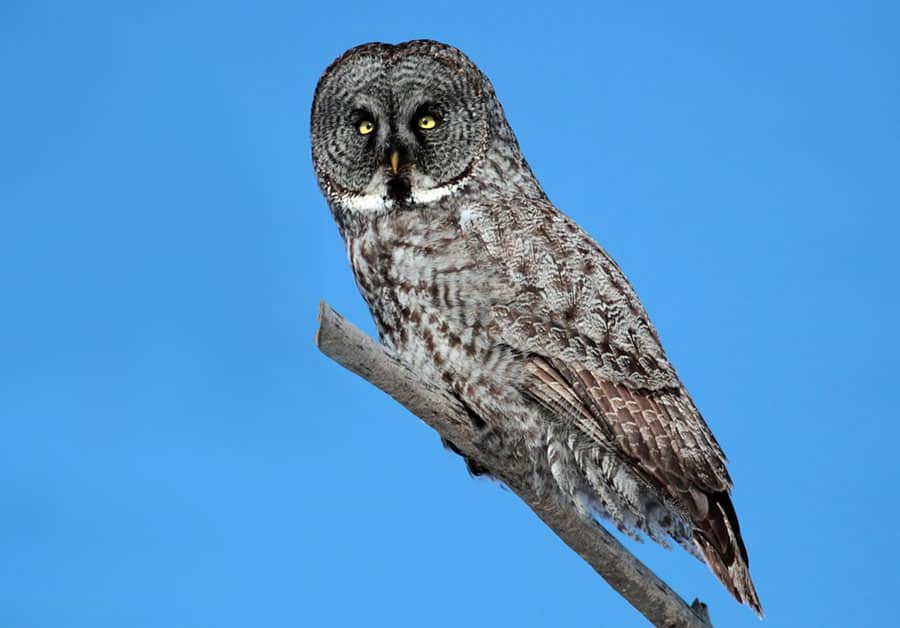Some of my “civilian” (nonbirding) friends wince when they hear the words yoked together. Winter? Birding? Isn’t that an oxymoron? Isn’t it cold, windy, nasty? Don’t all the birds flee south by Halloween? And if we had any sense, shouldn’t we follow? Yes, I answer, it can get cold, and some days the wind is brutal. Yes, many species do migrate south, but the residents stick around, joined by a wondrous array of winter visitors. And no, winter birders aren’t the craziest folks on Cape Ann. What about winter golfers, slicing their little white orbs into headwinds? Or scuba divers, out there dabbling with ducks in frigid surf? By comparison we’re—what’s the word?—sane.
Cape Ann, a peninsula roughly 30 miles north of Boston, consists of four towns: Gloucester, Rockport, Essex, and Manchester-by-the-Sea. It’s a fascinating area, with a proud tradition of fishing and shipbuilding, a distinguished cultural history (Winslow Homer, Edward Hopper, and Rudyard Kipling were all inspired here), working harbors, art galleries, and great natural beauty. Like the rest of the Massachusetts seacoast, it has sand and marsh, but more distinctively—in terms of both geology and bird habitat—our cape is a granite headland that juts out into the Atlantic. Here ocean meets rock, shaping coves, inlets, promontories, and crenulations, along with ledges, rocky islands, and abundant birds that breed and feed in these places.
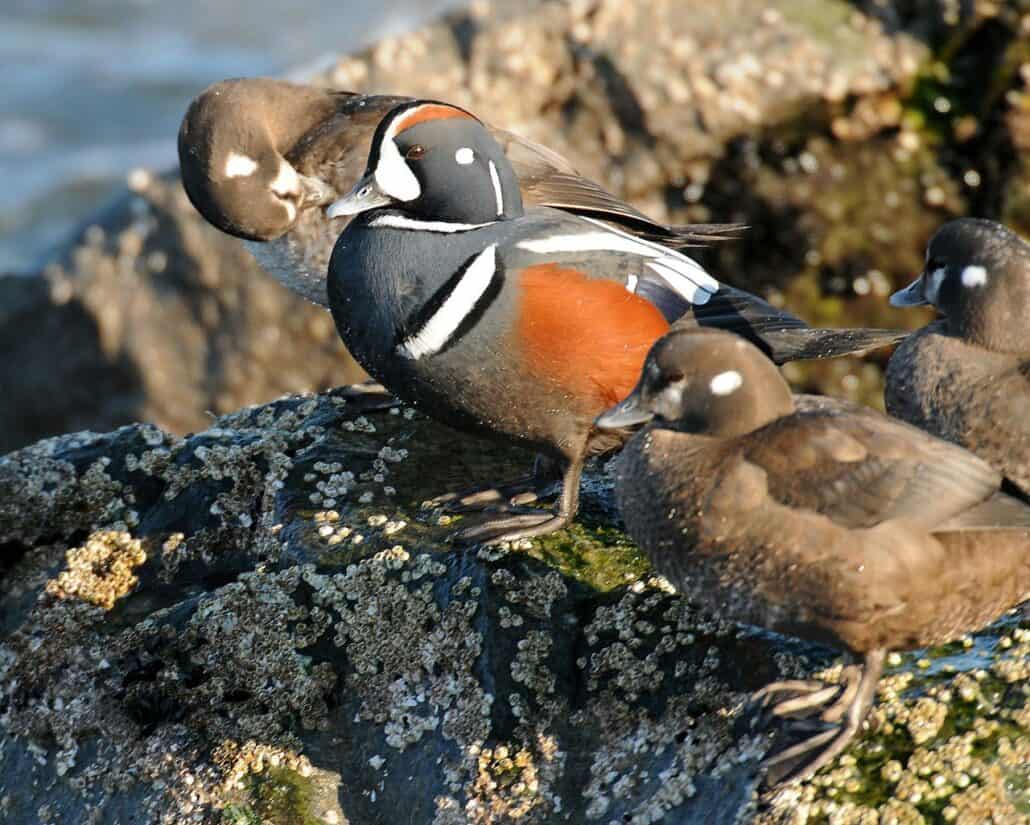
Cape Ann offers fine birding year-round, but it’s renowned among birders—locally, nationally, and internationally—as a premier winter destination. The main attractions are seabirds: waterfowl, alcids, and gulls. On a given winter’s day, with some effort, you’ll likely see 15 to 20 waterfowl species, among them two local specialties, king eider—uncommon but annual—and the range-restricted harlequin duck, a fantastical beauty fond of rough water and one of only three torrent-feeding ducks in the world. Six alcids are possible, from the probable razorbill and black guillemot to the scarce Atlantic puffin.
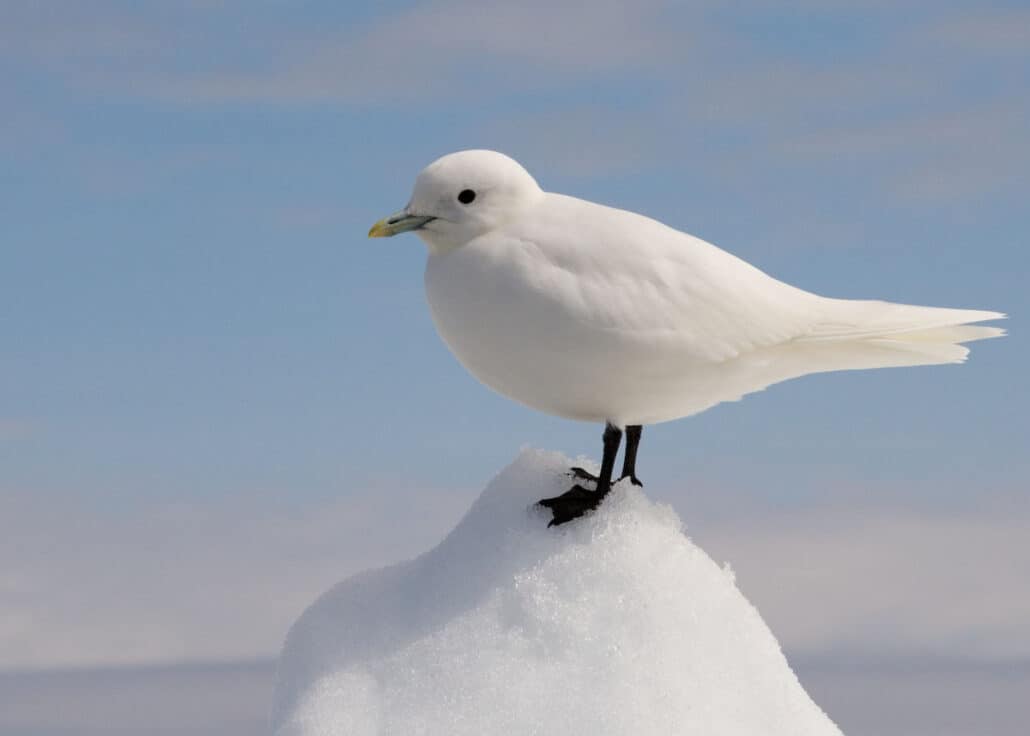
But it’s the gulls, particularly rare gulls, that have focused birders’ attention on Cape Ann. Like many birders, I was slow to embrace gull study—too much plumage variation, not enough color, and some dubious feeding habits. That was before my first glaucous, my first slaty-backed (found by David Sibley, the first record in Massachusetts), and my first ivory gull—a pure white glory—all a few miles from home. Don’t expect the latter two species on your Cape Ann trip, but you’ll have an excellent chance for Iceland (at the southern end of its winter range), a good chance for the imposing glaucous, and a fair chance with uncommon gulls such as lesser black-backed or even Thayer’s, although you’ll need to be a skilled observer—or, as I did, stand beside a skilled observer—to distinguish a Thayer’s from an Iceland. If you crave gulls, Cape Ann is your destination.
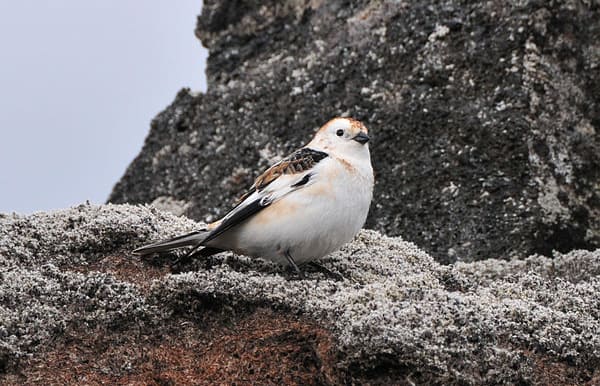
Although seabirds are the top winter draw, it’s also worth checking for land birds: resident songsters such as Carolina wren and purple finch, regular visitors such as snow bunting, irruptive species such as pine siskin and Bohemian waxwing, or the odd overwintering passerine, such as the shivering pine warbler that once welcomed in the new year in our backyard. Cape Ann has also had its share of winter vagrants. Western kingbird and Townsend’s solitaire have both been found several times in the past few years.
If you’re looking to bird with a group, the Massachusetts Audubon Society and Brookline Bird Club both offer trips here almost every winter weekend, and bird clubs from central or western Massachusetts, or Vermont or New Jersey, often come for a day or weekend of intensive birding. One standard route begins at the famed Gloucester Fishermen’s Memorial—the bronze Man at the Wheel statue dedicated to those who have “gone down to the sea in ships.” Here you’re looking out at Gloucester’s outer harbor, with Ten Pound Island in the foreground, Dog Bar Breakwater farther out, and on a clear day, the Boston skyline in the distance. It’s a good spot for common local ducks such as red-breasted merganser, bufflehead, and common goldeneye. (Up the coast a short ways north to Stage Fort Park, you can add one or both scaup species to the list.)
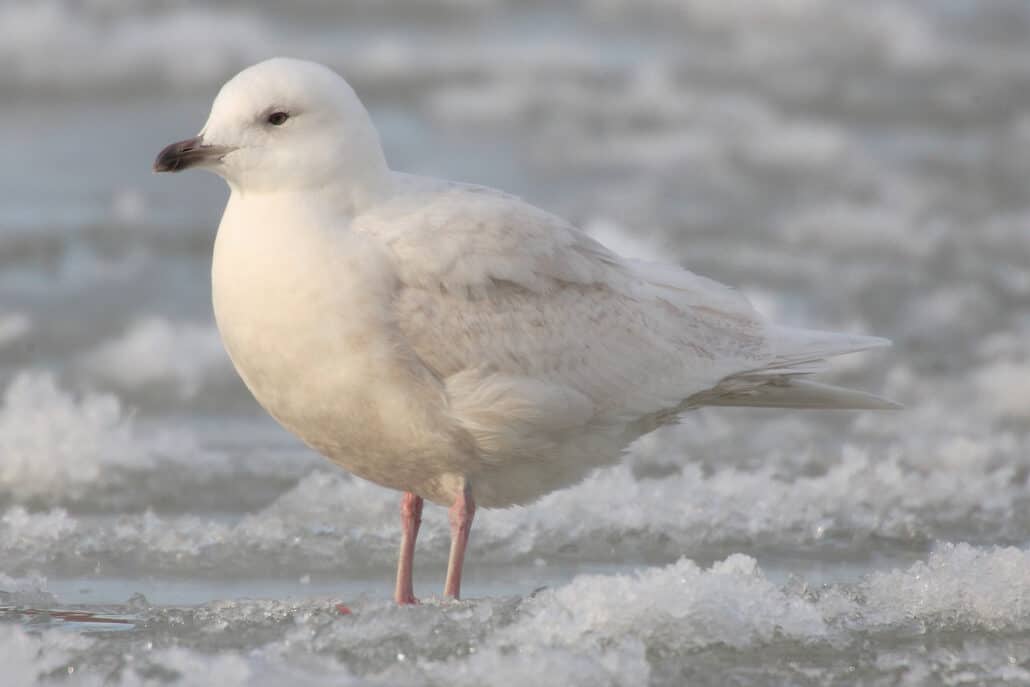
Jodrey Fish Pier, in Gloucester’s inner harbor, is gull headquarters. From the end of the pier, carefully scan the entire area—water, pilings, warehouse rooftops—for an Iceland or glaucous gull, or something more unusual, such as a black-headed, among the hundreds of herring and greater black-backed gulls. Alcids, grebes, and various ducks are all possible, and common loons often hang out near the pier. You have a good scope view of the City Hall tower, where two peregrine falcons have spent the past few winters. Across the water from a parking lot on Rocky Neck Avenue, you can scope the inner harbor from a different perspective or, by crossing the street, scan the outer harbor from a fresh vantage point.
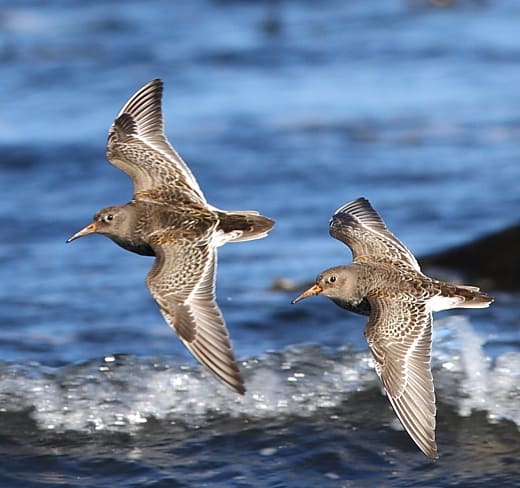
Niles Beach, at the entrance to the Eastern Point area, is a good spot to look for horned and red-necked grebes, all three scoters, long-tailed ducks, distant black guillemots, and with luck, Barrow’s goldeneye. The far end of Eastern Point—the lighthouse and Dog Bar Breakwater—offers another opportunity for the same birds, along with gulls, gadwall, and purple sandpipers, the last often feeding at the rocky tip of the seawall. In mild weather, hike to the end of the breakwater for a closer view of guillemots and purple sandpipers just below you—the sandpipers near enough to see how they could be called, if not “purple,” at least “purplish.”
Here you have a chance to scope open water for alcids, and a wonderful vista with Gloucester on one side and Boston across the sea on the other. On Eastern Point you should definitely check Niles Pond, an alternate gull headquarters even when frozen over. In January 2008, 10 gull species were found here, including slaty-backed and Thayer’s—all identifiable in part because they were standing on ice, with leg color easily visible. Open water may draw ducks—ring-necked, ruddy, perhaps redhead or canvasback—or an overwintering great blue heron.
The Back Shore of Gloucester, a long stretch of rocky coastline with an open view of the Atlantic and the twin lights on Thacher Island, is another fine area for guillemots, scoters, goldeneyes, grebes, common and red-throated loons, great cormorants drying out on offshore rocks, purple sandpipers on rocks along the water’s edge, and a possible northern shrike if you look inland. The grand prize here is king eider, often found directly out from the Elks Club parking lot on Atlantic Road.
By the way, if you’re scoping for a distant black-backed king eider, you’re more likely to confuse it with a greater black-backed gull than the locally abundant common eider. King eider has also been seen regularly from the north end of Good Harbor Beach, just up the coast. At the beach parking lot, check for horned larks, snow buntings, and the occasional Lapland longspur, as well as sparrows in the thickets.
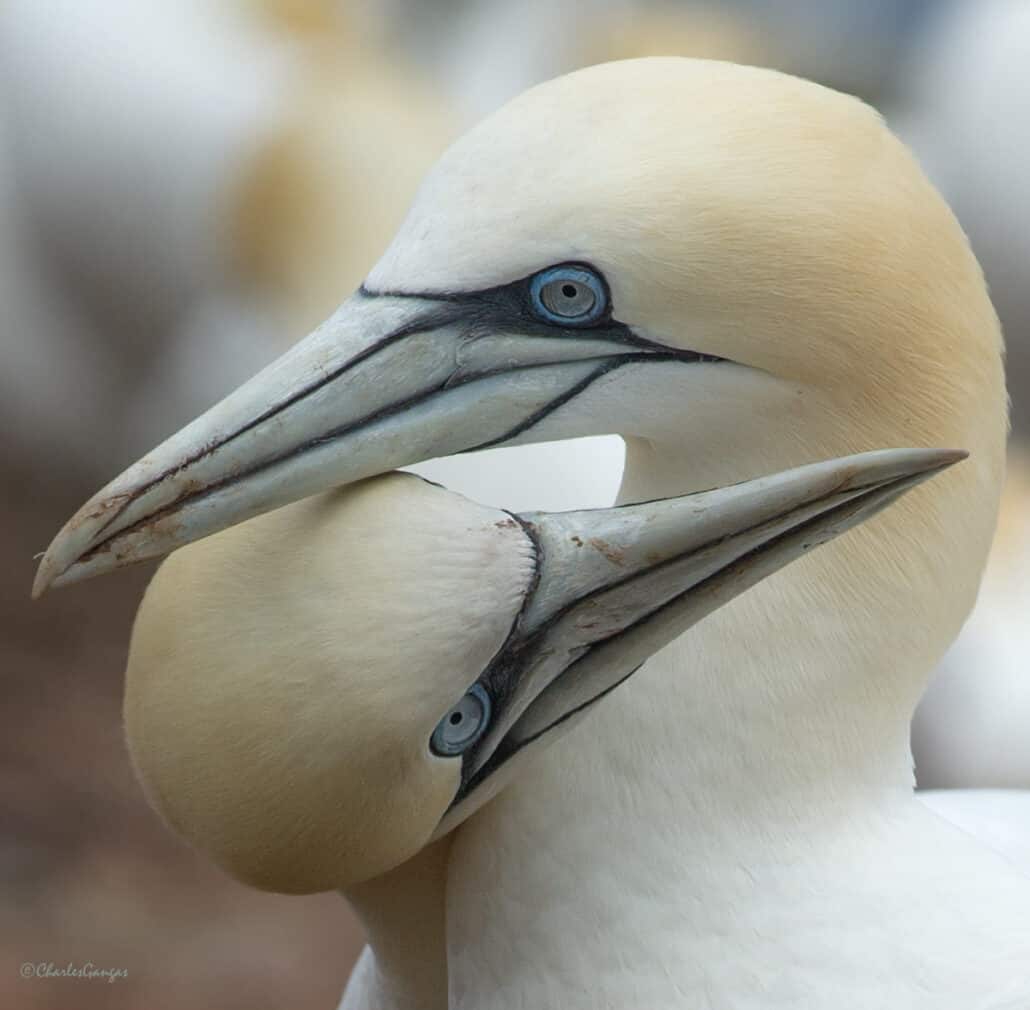
A seawatch at Halibut Point, Andrews Point, or Cathedral Ledge—close together and collectively called the Rockport headlands—is the last stop on the standard route, although you might want to start your tour here, early, on a morning when offshore winds have driven seabirds close to shore. This is a prime spot—perhaps the spot on the entire East Coast—for close views of harlequin ducks, and the best place on the Cape to scope for alcids such as dovekie, along with northern gannets, black-legged kittiwakes, loons, grebes, various ducks, and purple sandpipers. On the 70 acres of Halibut Point State Park and Trustee Reservation, you can search the heathland and copses for Bohemian waxwing, yellow-breasted chat, and vagrant flycatchers.
With more time on your winter trip here, you might visit Folly Cove just down the road from Halibut Point, Pebble Beach in Rockport, or Wingaersheek Beach in West Gloucester. In other seasons you might explore Eastern Point for spring and fall migrants, the Manchester–Essex woods for local breeding birds (scarlet tanager, winter wren, thrushes, cuckoos), or the fields and marshes of Essex for raptors and grassland species such as bobolink and eastern meadowlark.
Well, you might think, all this sounds quite nice, but seriously, how do you tolerate the weather? There’s a simple answer to this question. Wear your warmest mittens, your long johns, or if it’s that bad out, stay indoors, you silly person. No one’s forcing you to bird. We New Englanders may boast about toughing it out through nor’easters and raging blizzards, but we won’t think you’re a wimp if you’d rather not risk windblast and iced-over spectacles just to glimpse ducks through a winter haze.
In fact, one raw morning when I was scheduled to lead a Brookline Bird Club trip, I drove to the Gloucester Fishermen’s Memorial with the prayer that no one would be fool enough to show up. I waited 10 minutes, and was about to high-five myself and split when a single person appeared, a young local pastor and novice birder. What denomination, I wondered—the Church of Demented Winter Birders? But the pastor had a reason for coming out into the cold. Most trips were scheduled on Sunday mornings—not a good time for him—and this was a Saturday. At the fish pier and becalmed Back Shore, the pastor got some life birds.
Normally I would’ve taken him to Eastern Point, but I knew the wind would be fierce there that day, so I took pity and opted for Rockport instead. At Cathedral Ledge we marveled at the harlequins just beneath us, and then found at naked-eye range five Bohemian waxwings mixed in with the cedar waxwings. The trip was scheduled to go another two hours, but the pastor, bird-satisfied, weather-miserable, was clearly ready to quit for the day.
Back home I got a call from a birding buddy: An ivory gull was being seen, that very moment, at the Eastern Point lighthouse. I took off. I’d been prepared to chase this species to Maine, Quebec, or beyond, and here was one right across town. Approaching the lighthouse, I nearly drove into a thicket when I looked over and saw an impossibly white gull hovering above the icy marsh 100 feet from me. I parked, joined a throng of bird watchers, and feasted my eyes for another hour. I was tempted to track down the pastor and tell him: If it hadn’t been for you, my fine frozen friend, I would have found this rare gull myself.
There’s a lesson here about Cape Ann winter birding: Foul weather often brings great fowl. Indeed, I’ve heard local birders say, “It’s too damn nice out to find any good birds today.” Of course they’re joking.

